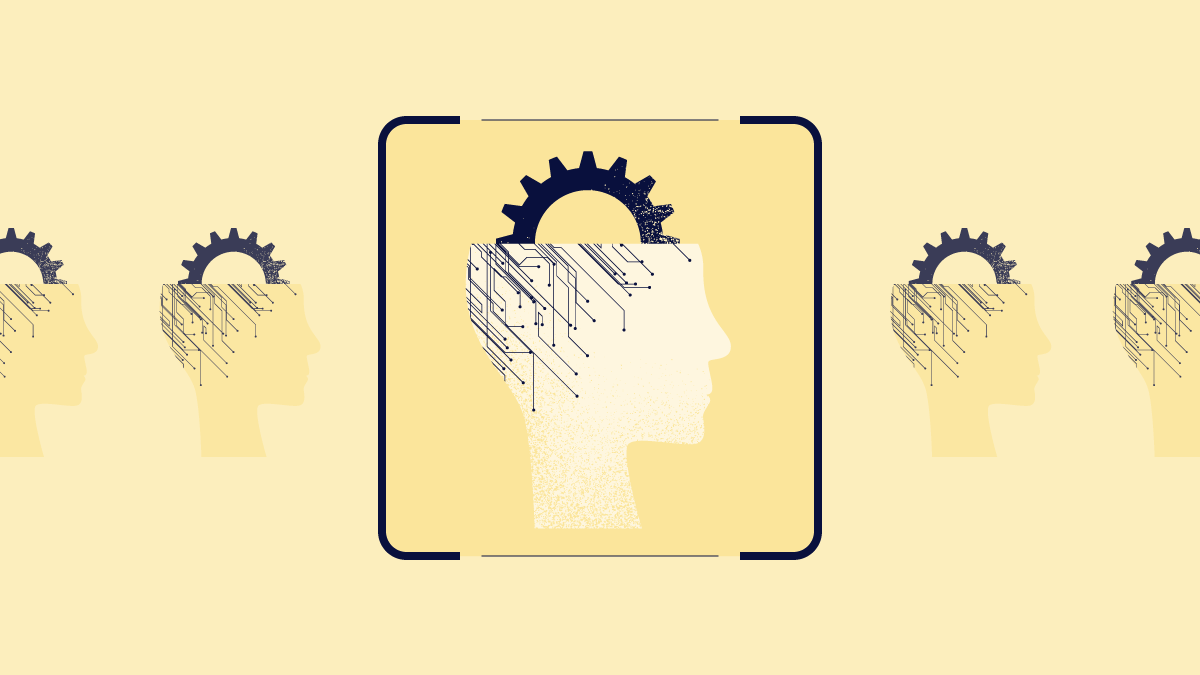
The Internet of Medical Things (IoMT) is revolutionizing the MedTech industry by integrating medical devices, wearables, and health applications through Internet connectivity. This transformation enables continuous health monitoring, real-time data exchange, and personalized patient care, improving outcomes and more efficient healthcare delivery. The IoMT impacts various sectors, including hospitals, clinics, home healthcare, and medical research, fostering a more connected and responsive healthcare ecosystem.
In this article, we'll explore the significance of IoMT in modern healthcare, demonstrating how connectivity drives innovation and enhances patient care. We will delve into the key sectors benefiting from IoMT, from remote patient monitoring to advanced diagnostics, and offer practical tips for integrating IoMT solutions into healthcare practices.
Whether you're new to IoMT or looking to deepen your understanding, this guide will provide valuable insights into leveraging IoMT for a more intelligent, more efficient healthcare system.
What is the Internet of Medical Things (IoMT)?
The Internet of Medical Things (IoMT) refers to the network of connected medical devices, software applications, and health systems that communicate with each other through the Internet. This interconnected web of technology enables the continuous collection, analysis, and transmission of health data, facilitating real-time monitoring and management of patients' health. IoMT devices include wearable fitness trackers, intelligent implants, remote patient monitoring systems, and connected diagnostic tools.

Source: Toor, Affan & Usman, Muhammad & Younas, Farah & Fong, Alvis & Ali, Sajid & Fong, Simon. (2020). Mining Massive E-Health Data Streams for IoMT Enabled Healthcare Systems. Sensors. 20. 2131. 10.3390/s20072131.
The Internet of Medical Things and the FDA
The Internet of Medical Things (IoMT) significantly intersects with 21 CFR Part 820, a.k.a. the Quality System Regulation (QSR) enforced by the FDA, which sets the standards for the methods used in and the facilities and controls used for the design, manufacture, packaging, labeling, storage, installation, and servicing of all finished medical devices intended for human use. IoMT devices, which rely heavily on real-time data collection and connectivity, must comply with FDA regulations to ensure they are safe, effective, and reliable. Integrating software and connectivity features in IoMT devices necessitates robust cybersecurity measures and continuous monitoring to protect patient data integrity and privacy. Compliance with 21 CFR Part 820 ensures that IoMT devices maintain high-quality standards throughout their lifecycle, fostering trust and reliability in these advanced medical technologies.
How are connected devices changing the MedTech industry?
So, why do we want the Internet of Medical Things in the medical device industry? Well, The Internet of Medical Things (IoMT) significantly enhances healthcare by enabling continuous monitoring and real-time data collection, which leads to early detection of health issues and timely interventions, effectively managing chronic conditions and reducing complications.
It streamlines data flow and automates routine tasks, thereby reducing administrative burdens and allowing medical staff to focus more on patient care, enhancing operational efficiency. IoMT lowers healthcare costs by minimizing hospital readmissions, reducing in-person visits through remote monitoring, and optimizing resource allocation. It also facilitates personalized healthcare through detailed data, improves patient engagement with user-friendly interfaces, and supports telemedicine, making healthcare more accessible, especially in underserved areas. Additionally, IoMT ensures patient safety and compliance with prescribed treatments through reminders and alerts and advances data analytics to drive medical research and innovation.
Overall, IoMT is poised to revolutionize healthcare by making it more efficient, personalized, and data-driven. This will ultimately lead to better health outcomes and a more sustainable healthcare system.
The challenges and opportunities in IoMT adoption
Adopting the Internet of Medical Things (IoMT) brings with it many opportunities, but it also presents several significant challenges. Understanding both sides is crucial for successful integration into the healthcare system.
Challenges of IoMT Adoption
- Data security and privacy: One of the most pressing challenges is ensuring the security and privacy of sensitive health data. IoMT devices generate vast amounts of personal health information, making them attractive cyberattack targets. Ensuring robust encryption, secure data transmission, and compliance with regulations like HIPAA is critical.
- Interoperability: Interoperability issues often hinder the seamless integration of various IoMT devices and systems. Different manufacturers use different standards and protocols, making it challenging to create a cohesive system where all devices can communicate and share data effectively.
- Data management: The sheer volume of data generated by IoMT devices can be overwhelming. Effective data management solutions are required to store, process, and analyze this data. This involves handling the volume and ensuring data accuracy, consistency, and relevance.
- Cost and infrastructure: The initial cost of implementing IoMT solutions, including the necessary infrastructure upgrades, can be high. Smaller healthcare providers or those in low-resource settings may find these costs prohibitive. Additionally, ongoing maintenance and updates add to the financial burden.
- Regulatory compliance: Navigating the complex landscape of healthcare regulations can be daunting. IoMT devices must comply with various standards and regulations, which can vary by region. Ensuring compliance while keeping up with evolving regulations is a significant challenge.
Opportunities for IoMT Adoption
- Enhanced patient care: IoMT enables real-time health monitoring, which leads to the early detection of medical issues and timely interventions. This proactive approach can significantly improve patient outcomes and reduce the incidence of severe health complications.
- Cost efficiency: By reducing hospital readmissions, minimizing in-person visits through remote monitoring, and optimizing resource use, IoMT can lead to substantial cost savings for healthcare providers and patients. This can also make healthcare more accessible and affordable.
- Personalized medicine and healthcare: IoMT facilitates the collection of detailed patient data, allowing customized treatment plans tailored to individual needs. This customization can enhance treatment effectiveness and improve patient satisfaction.
- Innovation and research: The vast amounts of data IoMT devices generate provide valuable insights that can drive medical research and innovation. Analyzing this data can lead to developing new treatments, a better understanding of diseases, and overall advancements in healthcare.
- Telemedicine support: IoMT plays a crucial role in expanding telemedicine services. IoMT helps bridge the gap between patients and healthcare providers, particularly in remote or underserved areas, by enabling remote patient monitoring and consultations.
What is the future of the IoMT?
The future of the Internet of Medical Things (IoMT) is poised to be transformative, driven by technological advancements, increasing healthcare demands, and the continuous evolution of regulatory frameworks.

Here are some key trends and predictions for the future of IoMT:
- AI and Machine Learning integration: The future of IoMT will heavily leverage artificial intelligence (AI) and machine learning (ML) to enhance predictive analytics, personalize patient care, and automate decision-making processes. AI will enable more accurate diagnostics, real-time health monitoring, and predictive maintenance of innovative medical devices.
- Advanced wearables and implantables: The next generation of wearables and implantable devices will offer even greater precision, longer battery life, and enhanced functionalities. These devices will not only monitor basic vitals but also track complex biomarkers and provide real-time feedback to both patients and healthcare providers.
- Improved patient engagement: Future IoMT solutions will enhance patient engagement through user-friendly interfaces, gamification, and real-time feedback mechanisms. This will empower patients to take an active role in managing their health and adhering to treatment plans.
- Automated healthcare facilities: IoMT will enable more automated and efficient healthcare facilities. Automated inventory management, predictive medical equipment maintenance, and streamlined workflows will reduce operational costs and improve service delivery.
- Big data analytics: The vast amounts of data generated by IoMT devices will be harnessed through advanced big data analytics. This will provide valuable insights into population health trends, disease patterns, and treatment outcomes, driving further innovations in healthcare.
- Ethical considerations: The moral implications of widespread IoMT adoption will be increasingly addressed, focusing on patient consent, data privacy, and equitable access to IoMT technologies. Ensuring IoMT benefits all populations, including marginalized groups, will be crucial.
- Cross-industry collaboration: The future of IoMT will see increased collaboration between healthcare providers, technology companies, insurers, and regulatory bodies. These partnerships will drive innovation, improve interoperability, and ensure that IoMT solutions are safe, effective, and widely adopted.
Scilife tips to IoMT
Medical device manufacturers can integrate the Internet of Medical Things (IoMT) trend by focusing on several key strategies to align their products and operations with the evolving healthcare landscape. Here's how they can effectively incorporate IoMT:
- Embrace advanced technologies by incorporating AI and Machine Learning into their devices. Through this, manufacturers can enhance diagnostic accuracy, enable predictive analytics, and automate decision-making processes. For instance, intelligent algorithms can predict device maintenance needs or identify early signs of patient deterioration.
- Adhere to standards and protocols to ensure their devices comply with industry standards such as FHIR (Fast Healthcare Interoperability Resources) and HL7.
Integrate advanced encryption, secure authentication methods, and regular updates to protect patient data and device integrity. This includes designing devices with security in mind from the ground up. - Conduct regular security audits to identify and mitigate potential vulnerabilities. This proactive approach can help prevent cyberattacks and ensure compliance with regulatory standards.
- Prioritize user experience by designing devices with intuitive interfaces and user-friendly features to enhance patient and provider engagement. Consider the end-user experience in both clinical and home settings.
- Stay updated with regulations and ensure devices meet all necessary compliance requirements. This includes data privacy laws like HIPAA and medical device regulations from the FDA and EMA. Similarly, manufacturers could participate in industry groups and forums to influence the development of regulatory standards and ensure they are practical and beneficial for manufacturers and patients.
- Focus on maintaining high data quality, accuracy, and integrity standards. This involves implementing robust data validation and cleansing processes.
- Dedicate resources to research and development to stay ahead of technological advancements. This includes exploring new materials, sensors, and power sources for IoMT devices.
- Regularly gather and analyze feedback from users and healthcare providers to continuously improve device functionality and performance.
Conclusion
In conclusion, IoMT represents one of the most transformative medical device industry trends, with the power to reshape the healthcare landscape. As technology evolves and adoption grows, IoMT will increasingly drive improvements in patient care, operational efficiency, and medical research, paving the way for a more connected, efficient, and patient-centric healthcare ecosystem. The future of IoMT is bright, promising a new era of healthcare that is smarter, more responsive, and more personalized than ever before.
Learn how Scilife Smart QMS for medical devices can fast-track your digital transformation journey.





